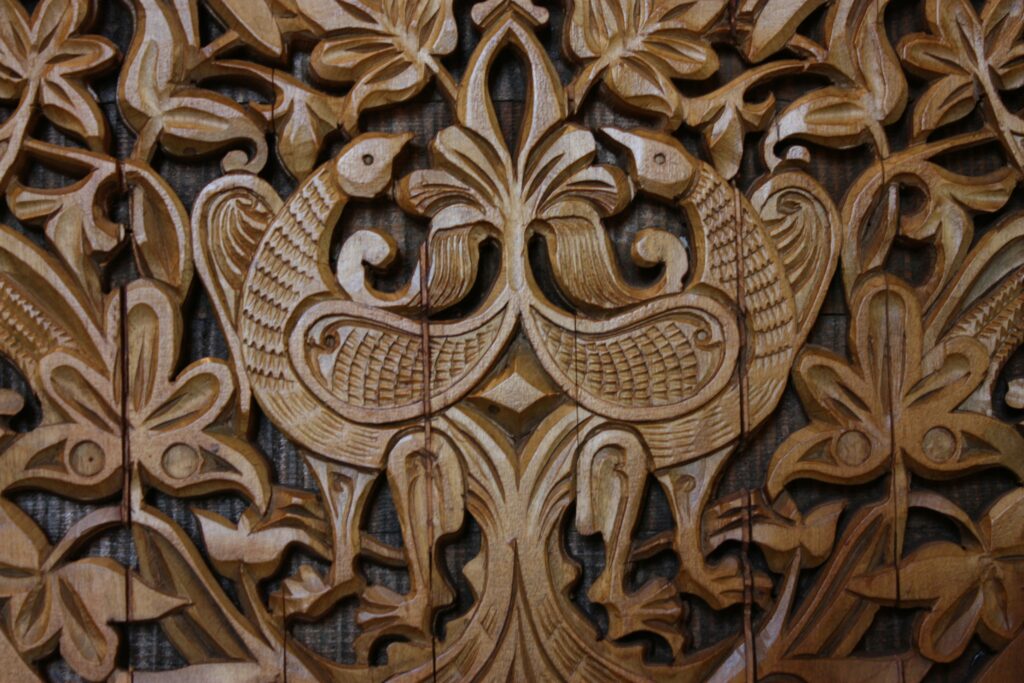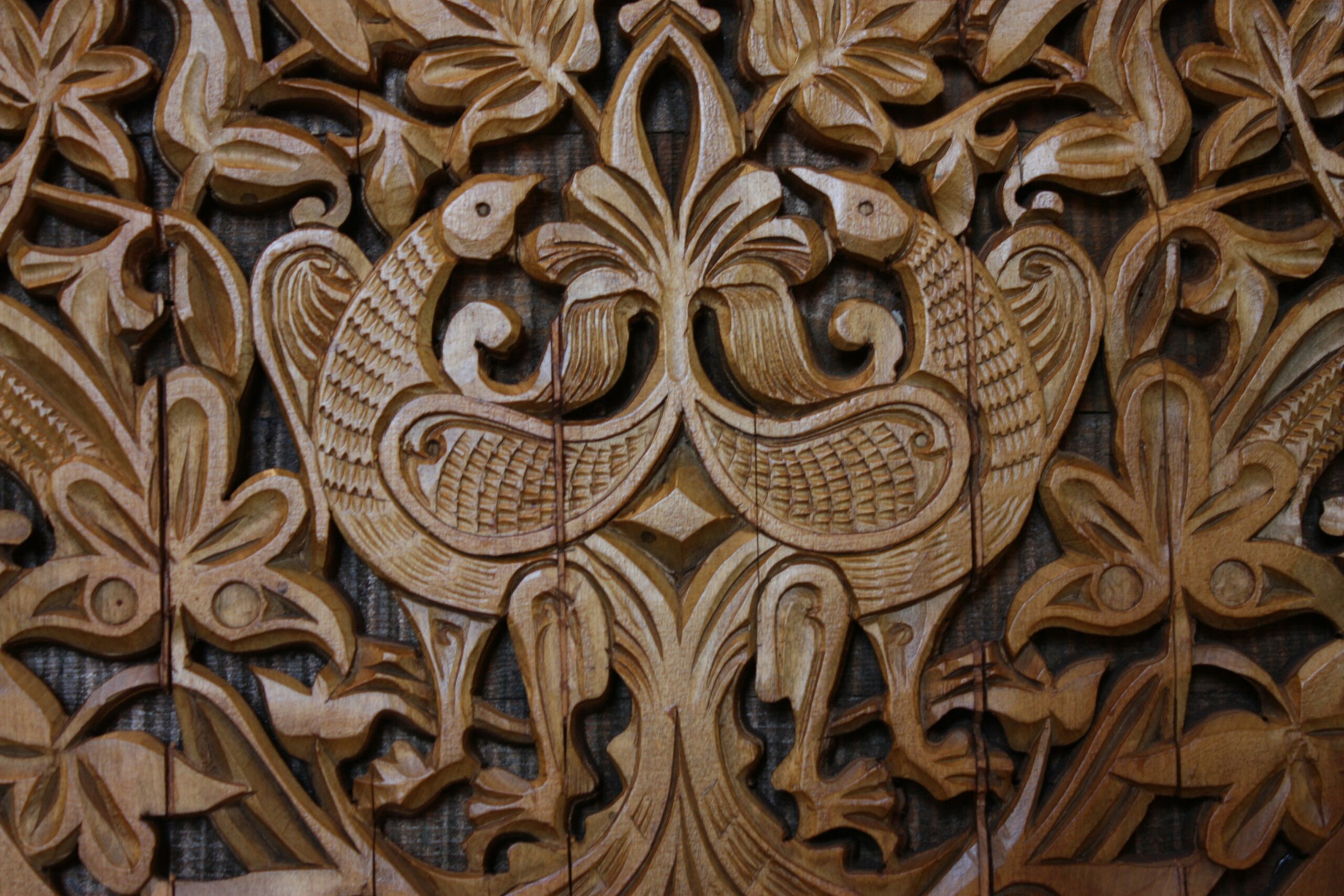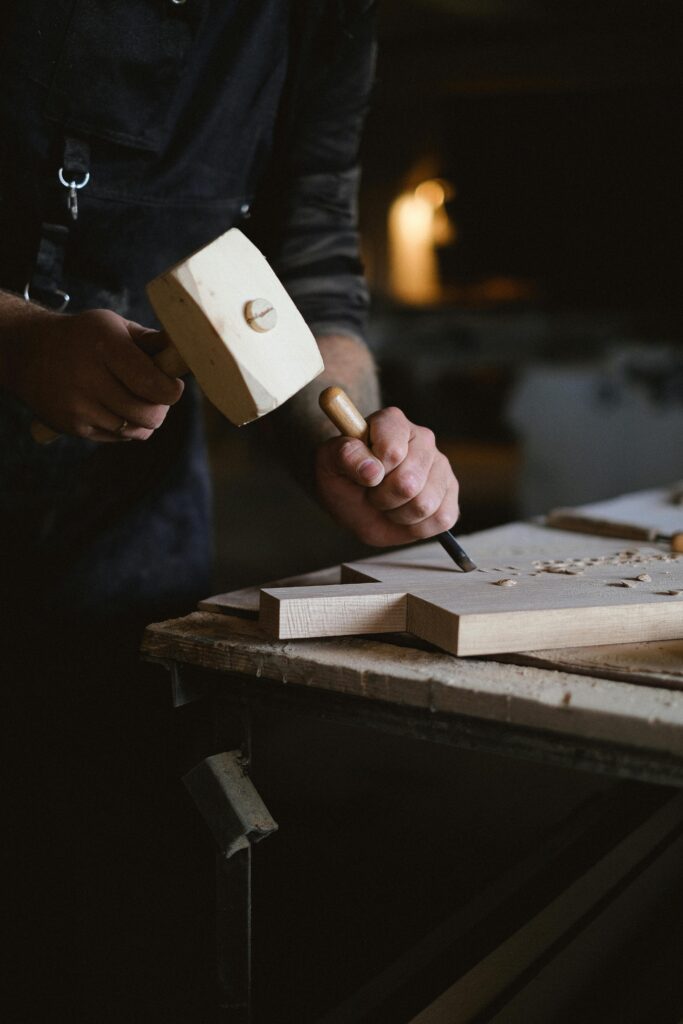
Wood engraving has a rich history, dating back centuries as a tool for printing and illustration. Over time, it has evolved, remaining a crucial method for artists and creatives alike. Today, modern technology has amplified what’s possible with wood engraving, allowing for a blend of precision, artistry, and innovation.
At the intersection of tradition and technology, wood engraving offers endless opportunities for artists. This fusion provides new ways for engravers to push creative boundaries, blending ancient techniques with cutting-edge tools.
The Roots of Wood Engraving
Traditional Beginnings
Wood engraving is a relief printing process where the artist carves an image into the surface of a wooden block. This technique became popular in Europe around the 15th century and was widely used for illustrations in books. The craft itself requires meticulous skill and patience, with each line carefully carved into the end grain of the wood.
Artistry and Technique
In traditional wood engraving, artists use specialized tools like burins and gravers to cut fine details into the wood. The end grain allows for precision, enabling artists to create intricate images. While the craft has deep historical roots, it has also embraced modern tools. Many engravers today use laser technology alongside hand tools to create more complex designs. Tools such as laser engravers, including models with considerable cutting capabilities, offer the precision needed for intricate patterns that would take much longer by hand.
The Artistic Process: Traditional Meets Modern
Traditional Tools and Techniques
For centuries, wood engravers relied solely on hand tools to carve detailed designs into wood surfaces. The skill involved in using tools like chisels and gravers was central to the final result, with each cut representing the hand of the artist. The traditional method is time-consuming but produces unmatched depth and texture in the work.
Incorporating Modern Technology
With modern advancements, artists have integrated digital tools into their practice. Laser engravers allow for incredibly precise cuts that can be difficult to achieve with hand tools alone. These machines can create intricate designs with a consistency that would be impossible manually. While these tools have changed the way wood engraving is done, they have not replaced the craft’s inherent artistry. Instead, they provide artists the freedom to explore new techniques while maintaining the personal touch of traditional hand engraving.
Modern Technology’s Influence on Wood Engraving
Laser Engraving and CNC Machines
Laser engraving and CNC (Computer Numerical Control) machines have revolutionized wood engraving. These tools allow for more detailed and accurate cuts, drastically reducing the time needed to complete a piece. CNC machines work by following programmed movements and carving out precise patterns, while laser engravers use beams of light to cut or etch the surface of the wood.
Laser engravers, in particular, are becoming more popular because of their ability to produce clean, intricate lines that were once hard to achieve by hand. This technology has made wood engraving more accessible to hobbyists and professionals alike, opening up new creative possibilities.
Expanding Creative Possibilities
The fusion of traditional techniques with modern technology has allowed engravers to explore new creative avenues. Artists can now combine hand-carved textures with machine precision, creating hybrid pieces that showcase the best of both worlds. This blending of techniques has become especially popular in custom furniture, home décor, and commercial signage, where precision and artistic expression are both critical.
Advantages of Combining Tradition with Technology
Precision Meets Personalization
One of the key advantages of blending traditional wood engraving with technology is the precision that modern tools provide. Laser engravers allow for consistent replication of detailed patterns, which is particularly important in large-scale projects. Despite this technological accuracy, artists still have the opportunity to infuse their style into the work, ensuring that each piece remains unique.
Efficiency and Accessibility
The efficiency gained from modern tools cannot be overstated. What once took weeks or even months can now be done in days. This increased speed allows artists to take on more ambitious projects, while also opening up the art form to a broader audience. With the availability of more affordable laser engravers, anyone can try their hand at wood engraving, blending tradition and technology to create custom designs.
Examples of Stunning Creations: Traditional vs. Tech-Enhanced
Traditional Masterpieces
Traditional wood engravers have long created works that highlight the beauty of hand-carved art. Artists like Thomas Bewick, known for his work in the 18th century, showcased the intricacy possible with hand tools. His pieces demonstrated how detailed textures could be achieved solely through skilled carving.
Tech-Enhanced Art and Design
Today, many artists are using technology to take wood engraving to new levels. By blending traditional hand-carving methods with laser engraving, artists can achieve detailed designs that were previously unimaginable. This combination of old and new has become particularly popular in furniture design, home décor, and branding, where detailed logos and patterns are replicated with perfect accuracy.
Practical Applications: Beyond Just Art
In the World of Furniture and Décor
Wood engraving is no longer limited to illustrations or fine art. It is increasingly being used in furniture and home décor, allowing for personalized designs to be incorporated into everyday items like cabinets, tables, and wall panels. These engraved details bring a personal touch to mass-produced items, giving designers more flexibility in creating unique pieces.
Commercial and Industrial Uses
Wood engraving is also widely used in the commercial world. Businesses utilize it to create custom signage, promotional materials, and branded displays. The precision of laser engraving allows for the accurate reproduction of logos, typography, and intricate designs, making it ideal for companies looking to add a personalized touch to their products.
Getting Started with Wood Engraving
Essential Tools for Traditional Wood Engraving
For those interested in trying their hand at traditional wood engraving, the first step is acquiring the necessary tools. Basic equipment like burins, gravers, and chisels are essential for creating detailed designs. Softwoods, such as pine or basswood, are ideal for beginners because they are easier to carve.
Integrating Technology
For those looking to speed up their workflow or explore more intricate designs, laser engravers provide a modern solution. These machines allow for precision in design that would take far longer to achieve by hand. Whether working traditionally or with technology, wood engraving offers endless creative possibilities for artists at any skill level.
Embracing the Future of Wood Engraving
Wood engraving is a craft that has evolved alongside technology. By combining traditional techniques with modern tools, artists can now explore new creative possibilities without losing the personal touch that makes this art form unique. The fusion of handwork and technology has not only preserved the tradition of wood engraving but has expanded it, inviting more people to experiment and create in ways that were once unimaginable.



